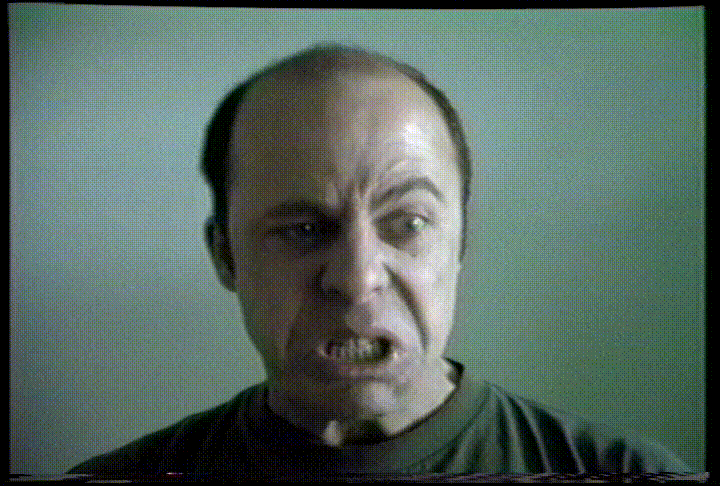
El artista Jordan Biren crea unhead clog con su mente.
The AV Artifact Atlas is for use in the identification and definition of the technical issues and anomalies that can afflict audio and video signals.
The goal of AVAA is to advance the audiovisual archiving field generally by strengthening the practice of reformatting archival media content. Archivists, curators, librarians, conservators, digitization service—plus all the users of cultural heritage content—benefit from the use of a common vocabulary, with supporting examples, when discussing such issues with one another. Users can improve the outcomes of their media preservation efforts if they can properly identify and characterize signal issues and anomalies. With a tool to facilitate building a vocabulary of terms and supporting examples, users will learn and be able to communicate about the problems with more clarity and understanding. With this understanding, it is more likely that fixable problems will be fixed, limited resources will be directed more appropriately, and the products of reformatting workflows will be of higher quality.
Por qué AVAA?
For original archival audio or video materials, the recorded signal must be reformatted in order to remain accessible. During the playback and reformatting process, how can we determine if an error we see or hear is inherent to the original recording, or was the result of an imperfect transfer? How can we tell if it is a sign of equipment malfunction or media damage? How do we know if it can be remedied?
Identification and definition of audio-visual artifacts is a critical part of archival work. Any number of errors in the signal encoding, or re-encoding, can occur at any point in the life cycle. Sometimes the error is introduced at the time that the recording is originally created, perhaps by either low-quality, improperly-configured or poorly-functioning equipment or by ambient conditions that interfere with the recording process. In some cases the error appears as the original recording is being reformatted, caused by damage or media deterioration that has occurred to the original media over time, or by poorly-functioning equipment used in the reformatting process. At any time, operator error can result in unintentional mistakes that reduce the quality of the transfer.
Archivists and conservators working with audiovisual content need to be able to reliably identify such errors, but they may lack formal training in audio and video engineering and may not be familiar or comfortable with its terminology. The need to be able to understand and communicate about technical anomalies is particularly important for the archivist working with a reformatting service provider. Archivists and conservators can use the AVAA material to inform themselves about these technical issues and apply the information to the quality control process, so that the archive, library or museum can better inspect the vendor’s product. Similarly, reformatting vendors may refer their clients to AVAA as an independent resource in order to illustrate issues encountered while transferring material.
The idea to create a community-based, online resource emerged while a group of media archivists attending the Association of Moving Image Archivists 2010 annual meeting were discussing quality control over vegetarian po’boy sandwiches at the Reading Terminal Market in Philadelphia. We were frustrated by the lack of an accessible resource covering these issues, one that can be used to support and inform quality control processes in archival media reformatting workflows. We realized that if we gathered together our clipped examples of media issues, pooling our knowledge on the subject, and then shared it as a community resource using wiki software, we might begin to fill the glaring gap.
Partners in the effort to bring about the AV Artifact Atlas include:
- Bay Area Video Coalition,
- New York University Digital Library Technology Services,
- Stanford Media Preservation Lab.
Special thanks go out to Don Williams, who first sparked the idea to use the term “artifact atlas” for a reference collection of media clips and image files that demonstrate technical errors while he was giving a presentation to the digital production staff at Stanford Libraries. Williams is an internationally-known digital imaging expert. Building on a successful career at Kodak, he now consults with the cultural heritage community and other industries with an interest in creating high-quality image content. Williams hopes to start a collaborative effort similar to AVAA, with the focus of the atlas on still image content. If you are interested in this idea, let Don know.
Expanding the AV Artifact Atlas: A Community Effort
With generous funding from the National Endowment for the Humanities, the Bay Area Video Coalition led a project to improve the AVAA as a resource and teaching tool.
Project goals included:
- Correlating terms in the AVAA with other resources, including the Compendium of Image Errors in Analogue Video and the Bay Area Video Coalition’s Preservation Glossary.
- Expanding the utility of the AVAA for a range of users with varying levels of expertise
- Incorporating more stills and media clips to illustrate artifacts
- Developing a Resource Library that includes information about analog video, digitization, and preservation.
AVAA is a community effort. Please contribute! Have you seen artifacts in your collection content? The AVAA seeks images and clips to illustrate analog and digital signal errors encountered during playback or transfer.
To participate, please contact us at avaa@bavc.org.

